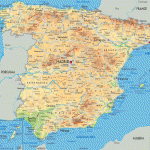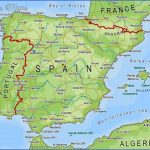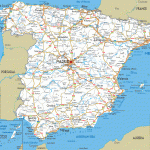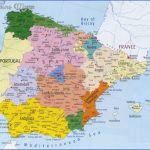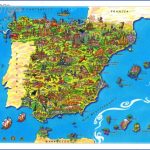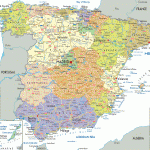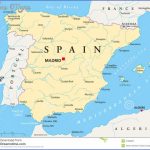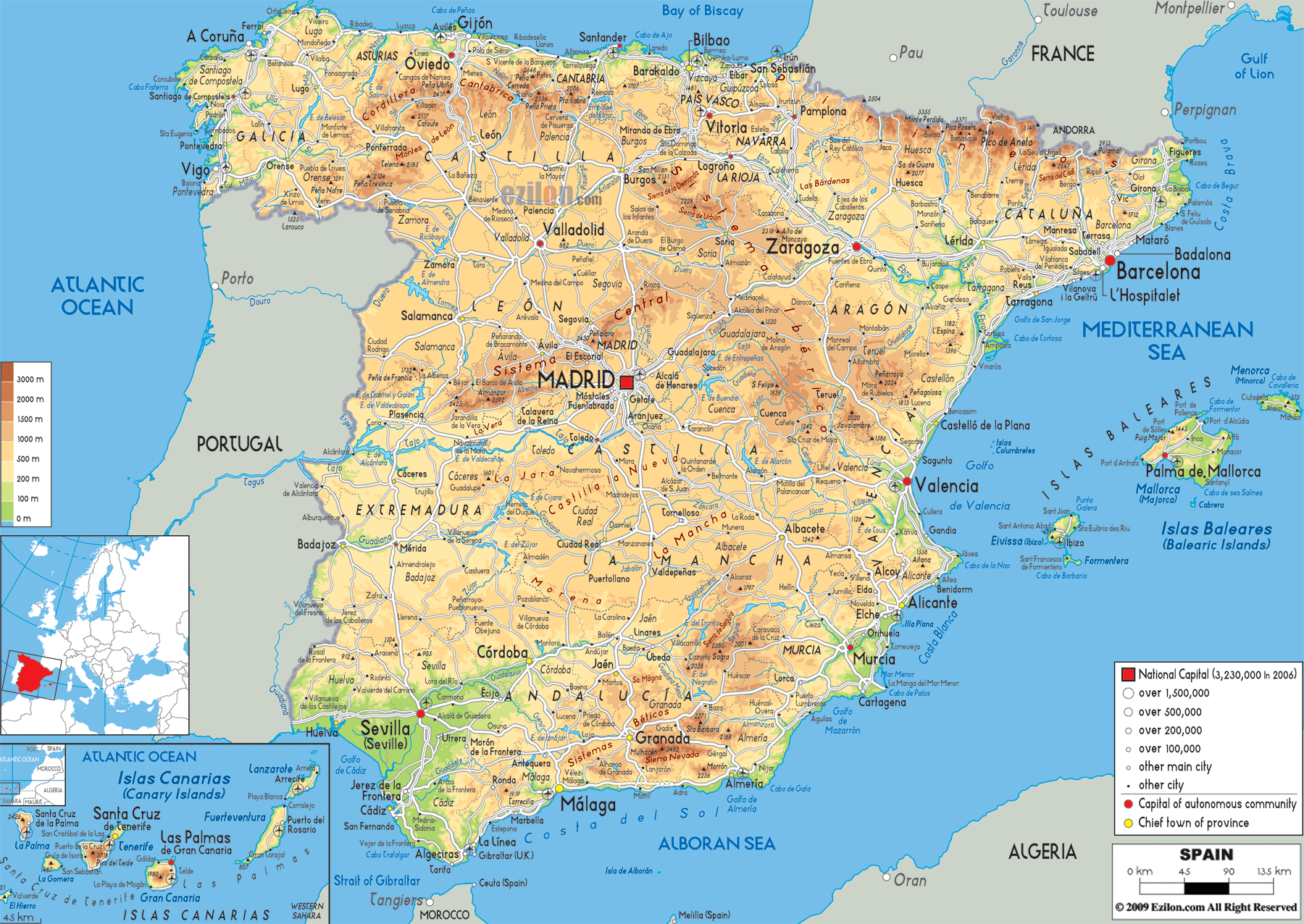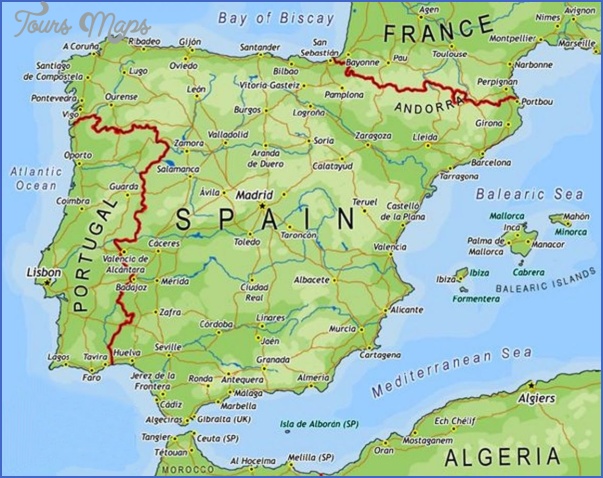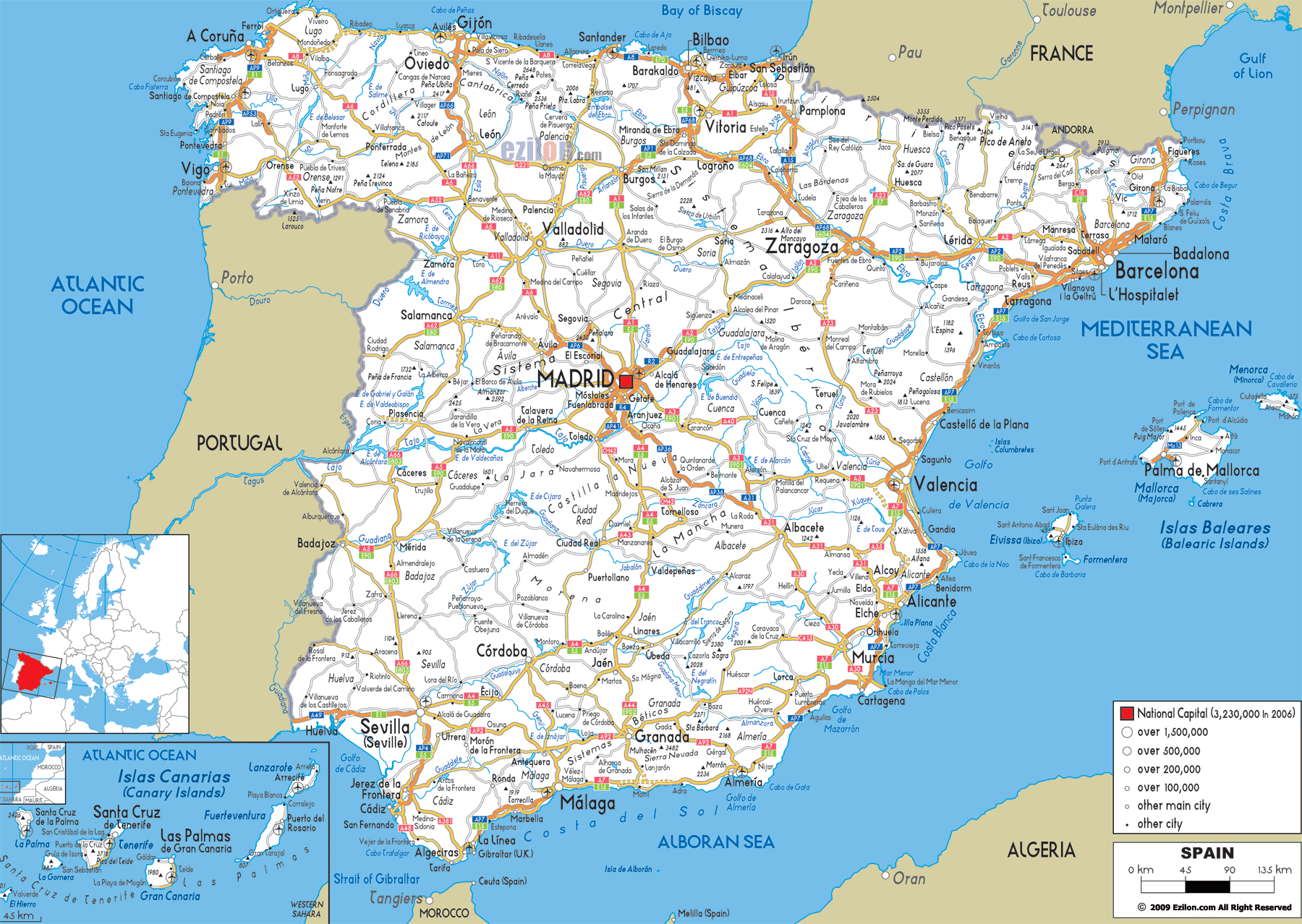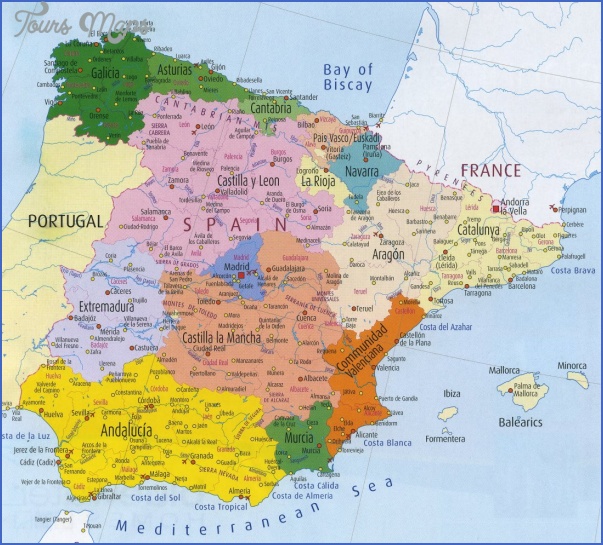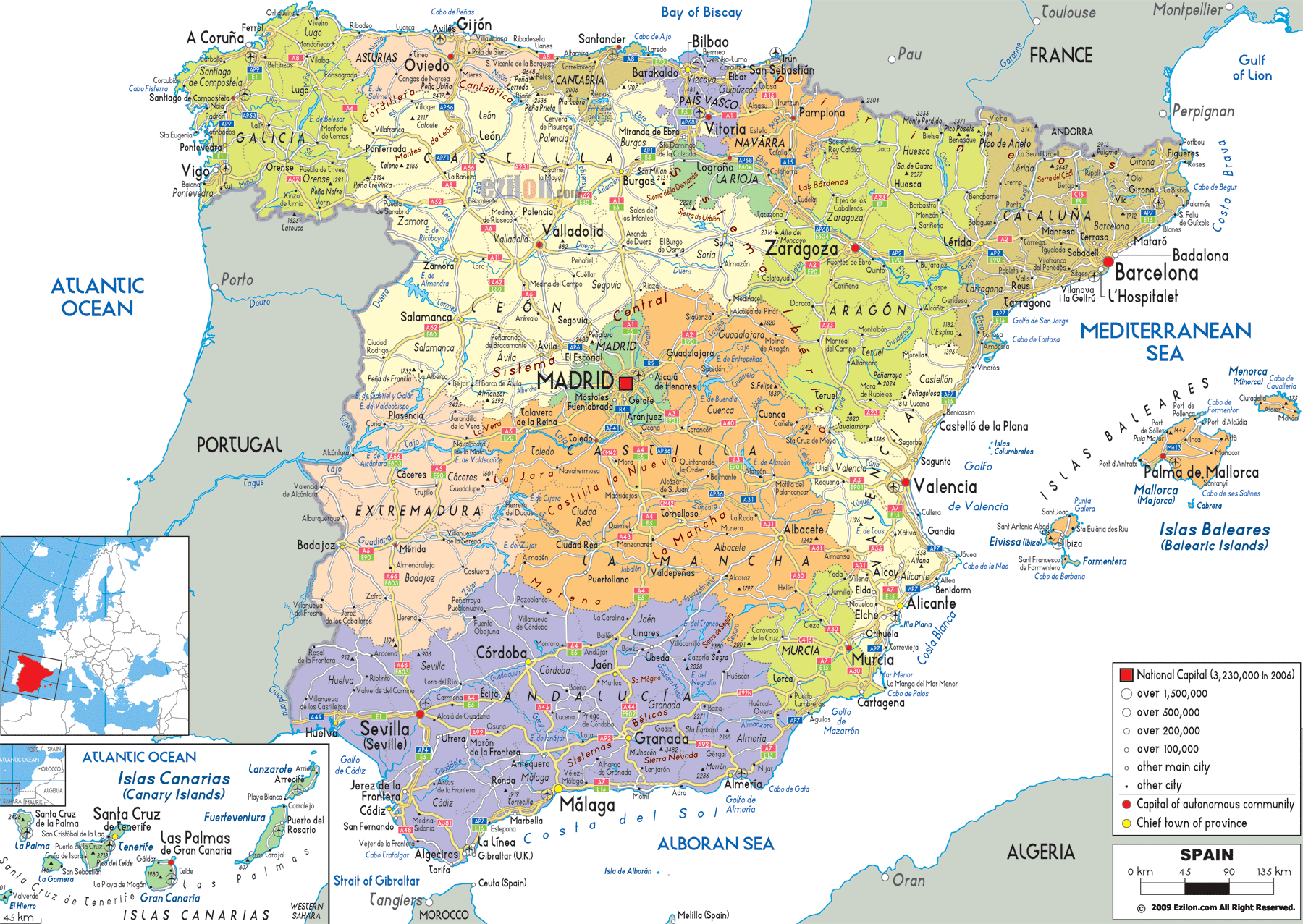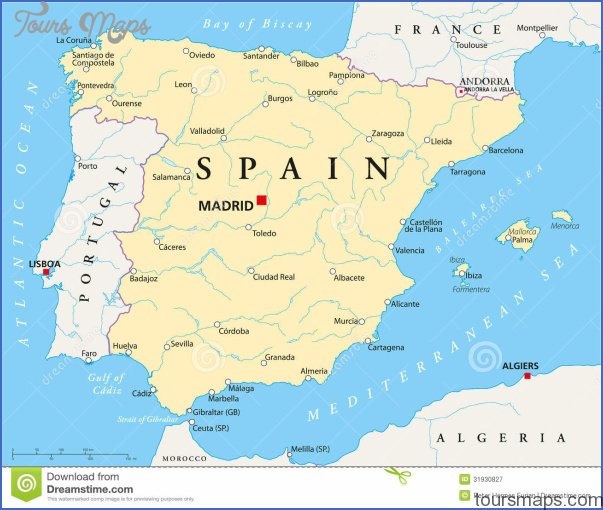Spain Map
WHEN TO GO
Summer is high season for the coastal and interior regions. In many parts of the country, high season includes Semana Santa (Holy Week; mid-April) and festival days. Tourism peaks in August; the coastal regions overflow while inland cities empty out, leaving behind closed offices, restaurants, and lodgings. Traveling in the low season has the advantage of noticeably lighter crowds and lower prices, but smaller towns virtually shut down, and tourist offices and sights cut their hours nearly everywhere.
DOCUMENTS AND FORMALITIES
VISAS. EU citizens do not need a visa. Citizens of Australia, Canada, New Zealand, South Africa, the UK, and the US do not need a visa for stays of up to 90 days. As of August 2003, citizens of South Africa need a visa in addition to a valid passport for entrance into Spain.
EMBASSIES. Foreign embassies are in Madrid (858); all countries have consulates in Barcelona (920). Australia, the UK, and the US also have consulates in Seville (892). Another Canadian consulate is in Malaga; UK consulates are also in Alicante, Bilbao, Ibiza, Malaga, and Palma de Mallorca; more US consulates are in Las Palmas and Valencia. For Spanish embassies at home, contact: Australia, 15 Arkana St. Yarralumla, ACT 2600, mailing address P.O. Box 9076, Deakin, ACT 2600 (612 6273 3918; www.embaspain.com); Canada, 74 Stanley Ave. Ottawa, ON KIM 1P4 ( 613-747-2252; www.docuweb.caSpainInCanada); Ireland, 17A Merlyn Park, Ballsbridge, Dublin 4 (353 269 1640); South Africa, 169 Pine St. Arcadia, P.O. Box 1633, Pretoria 0083 (27 12 344 3875); UK, 39 Chesham PI. London SW1X 8SB (44 207 235 5555); and US, 2375 Pennsylvania Ave. NW, Washington, D.C. 20037 ( 202-738-2330; www.spainemb.org).
TRANSPORTATION
BY PLANE. Airports in Madrid and Barcelona handle most international flights; Seville also has a major international airport. Iberia (US and Canada 800-772-4642; UK45 601 28 54; Spain 902 40 05 00; South Africa 11 884 92 55; Ireland 1 407 30 17; www.iberia.com), the national carrier, serves all domestic locations and all major international cities. For more info on flying to Spain, see 38.
BY TRAIN. Spanish trains are clean, relatively punctual, and reasonably priced, but tend to bypass many small towns. Spain’s national railway is RENFE (www.renfe.es). Avoid transvia, semidirecto, or correo trains they are very slow. Alta Velocidad Espanola (AVE) trains are the fastest between Madrid, Cordoba, and Seville. Talgos are almost as fast; there are lines from Madrid to Algeciras, Cadiz, Huelva, and Malaga. Intercity is cheaper, but still fairly fast. Estrellas are slow night trains with bunks. Cercanias (commuter trains) go from cities to suburbs and nearby towns. There is rarely a good reason to buy a Eurail if you are planning on traveling only within Spain and Portugal. Trains are cheap, so a pass saves little money; moreover, buses are an easier and more efficient means of traveling around Spain. However, there are several RailEurope passes that cover travel within Spain. (US 1-800-4EURAIL; www.raileurope.com.) Spain Flexipass offers three days of unlimited travel in a two-month period (first-class ‚211, 2nd-class ‚164). The Iberic Rail-pass is good for three days of unlimited first-class travel in Spain and Portugal (‚217). The Spain Rail n’ Drive pass is good for three days of unlimited first-class train travel and two days of unlimited mileage in a rental car (‚250-343).
BY BUS. In Spain, buses are cheaper and provide far more comprehensive routes than trains. In addition, bus routes also provide the only public transportation to many isolated areas. Spain has numerous private companies; the lack of a centralized bus company may make itinerary planning an ordeal. ALSA ( 902 42 22 42; www.alsa.es) serves Madrid, Asturias, Castilla y Leon, and Galicia, as well as international destinations in France, Italy, Morocco, Poland and Portugal. Auto-ResCunisa, S.A. (902 02 09 99; www.auto-res.net) serves Madrid, Castilla y Leon, Extremadura, Galicia, and Valencia.
BY CAR. Gas prices average ‚1.50-1.60 per liter. Speeders beware: police can photograph the speed and license plate of your car and issue a ticket without pulling you over. Renting a car in Spain is cheaper than in many other Western European countries. Try Atesa ( 902 10 01 Ol; www.atesa.es), Spain’s largest national rental agency. The Spanish automobile association is Real Automobil Club de Espana (RACE), C. Jose Abascal 10, Madrid Os-915 94 74 75).
BY BIKE AND BY THUMB. With hilly terrain and extremely hot summer weather, hiking is difficult. Renting a bike should be easy, especially in the flatter southern region. Hitchers report that Castilla y Leon, Andalucfa, and Madrid are long, hot waits. The Mediterranean Coast and the islands are much more promising, but Let’s Go does not recommend hitchhiking.
Spain Map Photo Gallery
Maybe You Like Them Too
- Explore Nevestino, Bulgaria with this Detailed Map
- Explore Pulau Sebang Malaysia with this Detailed Map
- Explore Southgate, Michigan with this detailed map
- Explore Les Accates, France with this Detailed Map
- Explore Góra Kalwaria, Poland with this detailed map

